- Deutsch
-
EnglishDeutschItaliaFrançais日本語한국의русскийSvenskaNederlandespañolPortuguêspolskiSuomiGaeilgeSlovenskáSlovenijaČeštinaMelayuMagyarországHrvatskaDanskromânescIndonesiaΕλλάδαБългарски езикAfrikaansIsiXhosaisiZululietuviųMaoriKongeriketМонголулсO'zbekTiếng ViệtहिंदीاردوKurdîCatalàBosnaEuskeraالعربيةفارسیCorsaChicheŵaעִבְרִיתLatviešuHausaБеларусьአማርኛRepublika e ShqipërisëEesti Vabariikíslenskaမြန်မာМакедонскиLëtzebuergeschსაქართველოCambodiaPilipinoAzərbaycanພາສາລາວবাংলা ভাষারپښتوmalaɡasʲКыргыз тилиAyitiҚазақшаSamoaසිංහලภาษาไทยУкраїнаKiswahiliCрпскиGalegoनेपालीSesothoТоҷикӣTürk diliગુજરાતીಕನ್ನಡkannaḍaमराठी
What You Should Know About Safety Relays?
- 2024/10/17
- 12
Catalog
An Overview of Safety Relays
Safety relays are devices that help keep machines and systems safe by checking for faults and preventing failures. They use multiple circuits that work together to make sure everything runs smoothly, even if one part stops working.
These relays work with two signals (called dual channels) and will only operate when both signals are functioning. If one signal fails, the relay shuts off and needs to be reset manually, which makes it a reliable safety feature.
A main part of safety relays is their special contacts that move together to prevent problems like sticking or fusing. This makes them required for use in high-risk places like factories and power plants. They also stop machines from restarting automatically after an emergency stop, so workers can check and fix issues before starting again.
Safety relays are often part of larger safety systems that combine multiple functions in a single, easy-to-install module. In the future, adding features like actual monitoring could make them even more effective at preventing accidents.
How Safety Relays Function?
Safety relays utilize different mechanisms to function effectively in various situations.
Electromagnetic Relays
Electromagnetic relays consist of iron cores, coils, armatures, and contact reeds. When voltage is applied, it creates a magnetic force that moves the armature, connecting or disconnecting contacts. They are reliable in industrial settings, consistently responding to different conditions and playing a big role in safely controlling engine functions in automotive systems.
Thermal Reed Relays
Thermal reed relays are made from materials that respond to temperature changes. They switch based on interactions between temperature-sensitive and constant magnetic rings. These relays work well in stable temperature environments, making them ideal for climate control systems.
Solid State Relays
Solid state relays feature no mechanical parts, making them robust and reliable. They excel in high-speed switching applications due to their minimal maintenance requirements. This design reduces downtime and lowers operational costs, particularly in advanced electronics.
Guide to Safety Relay Wiring
This guide explains safety relay wiring and their unique role in industrial safety. Safety relays ensure fail-safe operation by utilizing redundancy and self-checking mechanisms, typically through dual-channel configurations where two circuits monitor the same safety function, requiring both to agree on the system’s safety before taking action. Components include electromagnetic coils, contacts that control power to hazardous machinery (which break the circuit if a fault is detected to prevent accidents), and feedback loops. Wiring setups can be single-channel for less serious applications or multi-channel for high-priority safety needs. Safety relays work with devices like emergency stop buttons to create a complete safety network. Proper installation and labeling of connections are required to avoid errors, while regular inspections and testing are great to maintain reliability and comply with safety regulations. In industries like automotive manufacturing, safety relays protect workers on production lines and undergo rigorous testing for reliability. Adhering to industry standards, such as ISO or IEC, ensures the safe and effective use of safety relays.
Effective Use of Safety Relays
Safety relays are relevant for protecting electrical equipment by preventing unexpected failures. They ensure machines do not operate until issues are fixed, helping to avoid risks. For example, the PNOZ V safety relay has specific terminals for power connections (A1 for 24V+ and A2 for 0V), control inputs (like connecting S11 with S12 and S22), and reset conditions (S33 to S34 and Y1 to Y2). This relay activates only when all conditions are met, effectively managing risks and preventing small issues from escalating into major disasters.
In industrial settings, machinery must pass strict safety checks before being used again, following safety rules and confirmations. In emergency situations, the relay stops machinery immediately, isolates hazards, and requires manual confirmation before restarting. While this may seem overly cautious, it is a must for safety, as neglecting such procedures can lead to severe consequences.
By integrating safety relays like the PNOZ V into larger systems, industries—such as automotive manufacturing—can prevent machines from starting at the wrong time and protect both you and equipment. These systems quietly ensure daily operations run smoothly, even if their importance is often overlooked.
Modern safety relay technology is advancing, incorporating diagnostic features, enabling network communication for monitoring, and supporting predictive maintenance. These enhancements make safety relays proactive elements of broader safety strategies. Overall, safety relays maintain safety standards, ensure equipment operates smoothly, and protect workers, reinforcing our trust in complex systems.
Frequently Asked Questions [FAQ]
1. What are the requirements of safety relays for safety circuits?
Safety relays must meet specific requirements to ensure machinery operates safely. First, when the emergency stop is released, the machine should not restart on its own, avoiding potential hazards. Second, if there is a failure in the safety circuit, the machine's power must be cut off to prevent dangerous situations. Finally, if the safety circuit fails, the machine must remain shut down to protect both personnel and equipment.
2. What does the reset of the safety relay mean?
Resetting a safety relay means switching the relay contact from ON back to OFF. The relay starts in the OFF position, and this reset process is required to restore safe operating conditions after fixing a fault.
3. How does a safety relay work? Which three conditions must be met?
Safety relays function based on three conditions:
• Operating Conditions - The relay needs a proper electrical supply and no disconnections to monitor the safety circuit effectively.
• Reset Conditions - After resolving a fault, you must manually restart the equipment by pressing the reset button and ensuring the indicator lights are on. If the lights are off, there may be a problem with the safety relay.
• Troubleshooting - After resetting, you need to press the troubleshooting button to allow the relay to continue functioning. This step is needed for maintaining circuit safety and protecting personnel from hazards.
Verwandter Blog
-
Verständnis des C1815 -Transistors: Pinouts, Schaltungssymbole, Anwendungsschaltungen
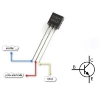
2023/12/20
Welche Art von Röhre ist der C1815?C1815 Triode PinoutC1815 ModellzeichnungC1815 -ParameterC1815 EigenschaftenAnwendung von C1815 Der C1815 -Transist... -
Ein Überblick über TTL- und CMOS -ICs und wie Sie zwischen ihnen wählen

2024/04/13
In diesem Artikel werfen wir einen detaillierten Blick auf zwei wichtige elektronische Technologien, komplementäre Metaloxid-Halbleiter (CMOS) und Tr... -
Netzteilspannung Abkürzung: VCC VDD VEE VSS GND
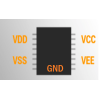
2024/06/6
Im modernen elektronischen Schaltungsdesign, Verständnis der Abkürzungen der Stromversorgungsspannung (wie VCC, VDD, VEE, VSS, GND).Diese Abkürzung... -
LR44 -Batterien: LR44 -Batterieäquivalente und LR44 -Batterieersatz
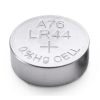
2024/01/24
In einem sich schnell entwickelnden technologischen Gebiet, in dem die Größe der elektronischen Geräte weiter schrumpfen und dennoch alltäglicher ... -
Verschiedene Arten von Sicherungen und Anwendungen

2024/04/18
Sicherungen sind wesentliche Komponenten in modernen elektrischen Systemen und fungieren als entscheidende Beschützer vor Überstrom.Sie arbeiten, in... -
Leitfaden zu Buck-, Boost- und Buck-Boost-Konverter
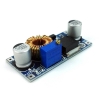
2023/12/21
Was ist ein Buck -Konverter?Wie funktioniert ein Buck Converter?Was ist ein Boost -Konverter?Wie funktioniert ein Boost -Konverter?Was ist ein Auftrie... -
Grundkenntnisse über Sicherungen: Merkmale, Arbeitsprinzipien, Typen und wie man richtig auswählt
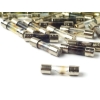
2024/04/10
Sicherungen schützen Schaltungen vor Schäden aufgrund von Überlastung oder Kurzstrecken.Dieses einfache, aber geniale Gerät basiert auf einem leic... -
Beschreiben Sie kurz die Spezifikationen, Verpackungen, das Arbeitsprinzip, die Vorteile und die Umweltauswirkungen von Lithium-Ionen-Batterien
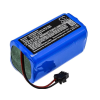
2024/03/20
Seit der Einführung von wiederaufladbaren Blei-Säure-Batterien im Jahr 1859 wurden sie allmählich in den Gewebe des technologischen Fortschritts ei... -
Transistor (BJT und MOSFET) Arbeitsprinzipien
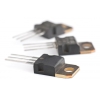
2023/12/20
Arbeitsprinzip des bipolaren Junction -Transistors (BJT)Auswahl der KomponentenwerteWie wählen Sie einen Transistor?Arbeitsprinzip von MOSFETWie scha... -
Beherrschen analoge und digitale Schaltungen: Ein Anfängerführer
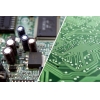
2023/12/20
Definition und Eigenschaften von analogen Schaltungen und digitalen SchaltungenDer Unterschied zwischen analogen Schaltungen und digitalen Schaltungen... -
Transistor umfassender Leitfaden
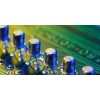
2023/12/20
1. Was ist ein Transistor?2. Wie funktioniert ein Transistor?3. Vorteile von Transistoren4. Arten von Transistoren5.faq 1. Was ist ein Transistor? Ein... -
Eine vollständige Liste von Testmethoden für verschiedene Transistoren
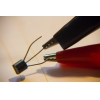
2023/12/20
Der Transistor wurde von John Bardeen, William Shockley und Walter Brattain erfunden.Es handelt sich um ein Kollektor-, Emitter- und Basis-Drei-termin... -
Grunde elektronische Grundkomponenten verstehen - Widerstände, Kondensatoren, Dioden, Transistoren, Induktoren und digitale Logik -Tore
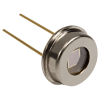
2024/04/13
Elektronische Komponenten sind der Eckpfeiler des Bauens und der Optimierung elektronischer Schaltkreise.Von gewöhnlichen Haushaltsgeräten bis hin z...
